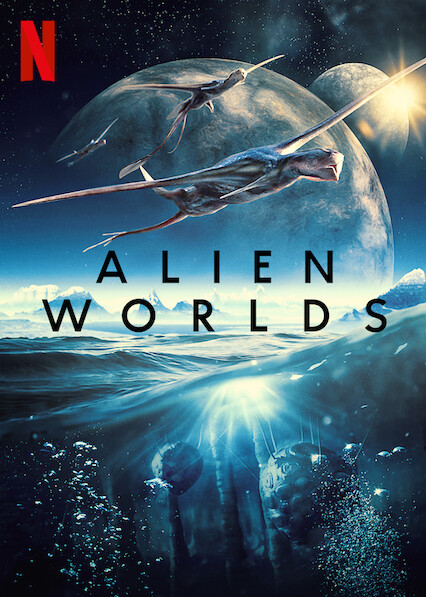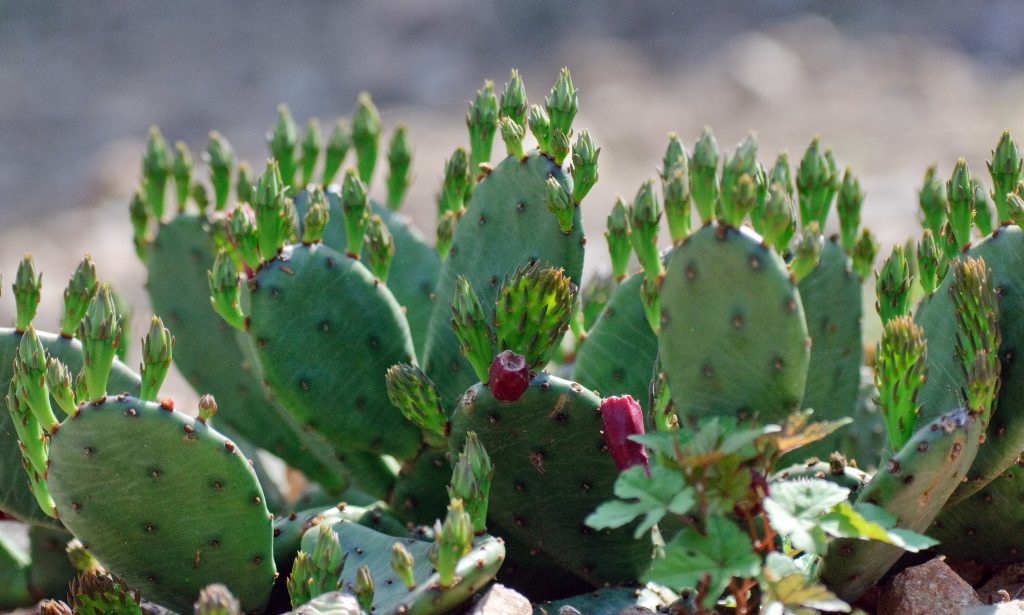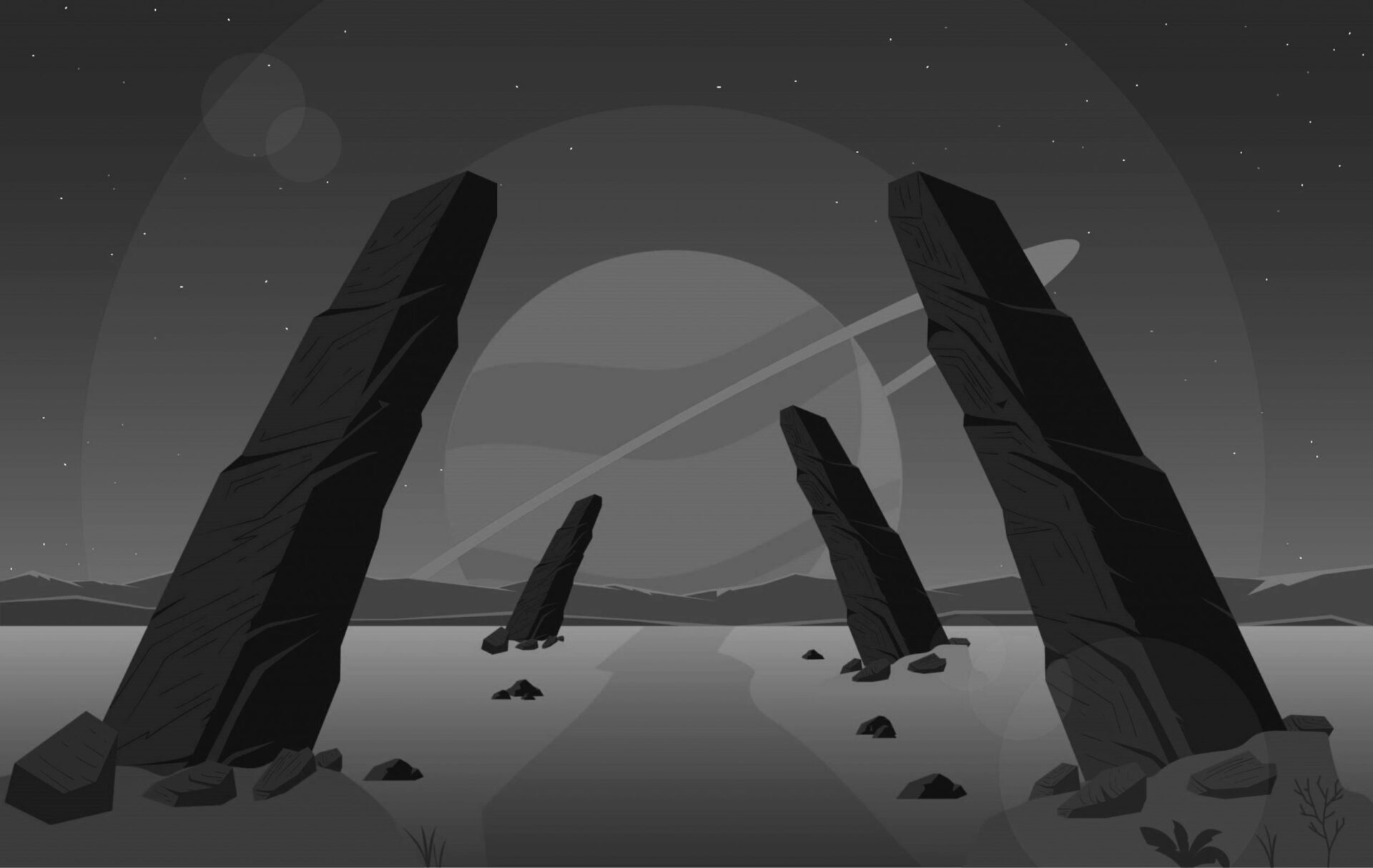Yesterday Netflix released a documentary entitled Alien Worlds that covers the topic of exoplanets and speculative evolution. Each of the four episodes presents a different planet and I have already covered the first planet, Atlas. This post covers the planet Janus from the second episode.

Episode 2: Janus
The second planet to be presented orbits a cool red dwarf star and is tidally locked to the star. I haven’t yet written a post on tidal locking but it basically means that the planet rotates at the same rate as it orbits its star. This means that one side of the planet always faces the star and the other side always faces away from the star. In simple terms, the near side is hot and experiences permanent daylight. In contrast, the far side is cold and permanently dark. For this reason Janus is a particularly apt name for the planet.
The following parameters were provided for Janus:
- Star: M-Class
- Stellar Temperature: 3,500 K
- Orbital Distance: 0.18 AU
- Spin Resonance: 1:1
- Diameter: 11,468 km
- Mass: 5.37 x 1024 kg
- Temperature Range: -50 °C to +65 °C
- Orbital Period: 48.5 days
- Energy Flux: 0.778 kW/m2
- Day Length: ∞
The first thing to notice is the confirmation that the planet is tidally locked. This is what the spin resonance of 1:1 implies as it means the orbital period is the same as the rotation period. It takes 48.5 days to orbit its sun but the day length is infinite. This means that on the near side the sun stays fixed in the sky and that there are no seasons. This also means that shadows for static objects remain fixed in place and do not change over time. The quoted temperature range suggests that the far side is -50 °C and the location closest to the star where it is permanently noon is +65 °C.
While it is not explicitly quoted, using the mass and radius parameters it is possible to calculate the surface gravity using the appropriate equation:
\[g = \frac{GM}{R^2}\]
\(G\) is the gravitational constant, \(M\) is the mass of the planet and \(R\) is the radius of the planet.
| Planet | Mass (kg) | Mass (M⊕) | Diameter (km) | Radius (R⊕) | Surface Gravity | Density (g/cm3) |
|---|---|---|---|---|---|---|
| Moon | 7.35 x 1022 | 0.01 | 3,474 | 0.27 | 0.17 g | 3.35 |
| Mercury | 3.29 x 1023 | 0.06 | 4,879 | 0.38 | 0.38 g | 5.40 |
| Mars | 6.39 x 1023 | 0.11 | 6,779 | 0.53 | 0.38 g | 3.92 |
| Venus | 4.87 x 1024 | 0.81 | 12,104 | 0.95 | 0.90 g | 5.24 |
| Janus | 5.37x 1024 | 0.90 | 11,468 | 0.90 | 1.11 g | 6.80 |
| Earth | 5.97 x 1024 | 1.00 | 12,742 | 1.00 | 1.00 g | 5.51 |
| Atlas | 1.21 x 1024 | 2.03 | 16,845 | 1.32 | 1.16 g | 4.83 |
The above values use the quoted size and mass for Atlas to calculate the lower surface gravity value of 1.16 g rather than the quoted value of 2.09 g. Note that according to the values provided, despite being smaller and less massive than Earth, Janus has almost the same strength gravity as Atlas. Strangely, no mention is made of this.
The reason for this apparent discrepancy is due to the density of the planets. Typically, more massive planets are denser as the strength of their own gravity compresses them more than a less massive planet. However, the elements that make up the planet can change this. The mass-radius relationship for solid exoplanets can be estimated by considering the ratio between silicates and iron in the planet. Mercury is very iron rich and so is denser than would otherwise be expected. Janus appears similarly iron rich whereas Atlas is presumably iron poor compared to Earth. Whether or not this has any effect on speculative evolution is an open question though.
Habitability
The episode begins with a description of the Danakil Depression in Ethiopia. This is a volcanic region containing many hot springs and which is on average the hottest place on Earth. Even in this harsh environment life is present though it is primarily in the form of extremophile microbes living in the hot springs. This is setting the scene to suggest Janus is a similarly harsh location.

Moving on, the opening visuals of Janus show a relatively barren planet with no water on the day side. This is a simple model of a tidally locked planet where water evaporates from the day side and is transported to the night side where it falls and freezes. The end result is that half the planet is a hot sunlit desert whereas the other half is a cold dark glacier.
Only in between these regions is the planet assumed to be habitable. Glacial melt water flows from the far side to the near side carving canyons along the way. This ring around the planet exists in perpetual twilight as the sun always remains low in the sky. This model of tidally locked planets is relatively simplistic and various parameters can influence the climate to make the simple model incorrect: rotation rate, thick atmosphere, clouds, humidity, ocean currents, radius and gravity, etc.
In fact, given that Janus is relatively far from its sun and has a solar energy flux of 57% that of Earth, it seems more likely that the habitable region would be around the substellar point with an icy region encroaching onto the day lit side. Note that the well known speculative evolution world of Ilion is an example of this.
Vegetation
Assuming that life is only present in a thin ring near the boundary between near and far sides it was proposed that vegetation could grow in the canyons where water was present. However, since the planet already receives less light than the Earth and the sun would be very low in the sky at this point this is not an ideal location for plants dependent upon light. There is also the problem that since the planet is tidally locked then the sun wouldn’t move in the sky and shadows would be permanent. The visuals were quite gloomy but some of the plants did appear to be growing in the shade. That would be a bad place to grow and I would expect such plants to evolve some mechanism such that they mostly only grow in non-shaded areas.
Also, the shape of the plant leaves suggests a desert plant though it’s not obvious that is optimal for the proposed location on Janus. Larger leaves could be required to capture as much of the low light as possible, though this could cause water loss. Perhaps a prickly pear type cactus oriented to catch the sun like a solar panel and with chlorophyll only on a single side? I do not yet have a good answer to this, though I will have to consider it for my speculative evolution project as Khthonia is tidally locked.

Pentapods
The main organism to be featured on Janus is the pentapod. This is a five legged radially symmetric omnivore about the size of a house cat (though it seems larger). It appears to have an exoskeleton and this raises the constant speculative evolution question as to how large a organism with an exoskeleton can be. That will have to remain unanswered for now but I aim to return to this once I have more information. Pentapods also have ten eyes, a mouth on top of their body and three tentacle like arms that pass food to the mouth.
They certainly seem very alien but their body plan raises various questions. Why are they radial when they seem to spend most of them time walking in a single direction and are shown to be predators not prey? Why is their mouth on top of their body, wouldn’t it have been better placed beneath the pentapod? Why does their mouth have teeth when they seem to drop their food straight down their throat like a mobile garbage disposal unit?
Just to ensure that they are seen as completely alien they are hermaphrodites and when a pair mates they both fertilise each other. The “mating” scene did involve two pentapods embracing and simultaneously slipping a tentacle into each others “mouth”. It may be a CGI alien but that was certainly more graphic than you normally see on nature documentaries!
Not content with the level of alienness exhibited by the pentapods, they are also shown to propel their swarm of larva out of their mouth which turn into mini spinning helicopters that fly far and wide. Perhaps this is the reason that they remain radial?
Just to further emphasis how alien the pentapods are, it is suggested that they are the “masters of polyphenism” which means that the same set of genes (i.e. genotype) can produce different body types (i.e. phenotypes) depending on environmental conditions. This means that the larva can end up in the twilight zone or either side in the sunlit or dark side and yet still grow up to be adapted to the local conditions.
Finally, it is said that “all began life in the same place”, suggesting that all pentapods are spawned in the twilight canyons. However, if the ones who travel beyond the canyons do not return, how would natural selection operate? There is no hint that they return to their birthplace to spawn like salmon but I suppose that is possible. This is another example that seems to show the pentapods as a grab bag of many ideas but in the limited time available these ideas are not fully explored.
Geothermal Pools
Since life is said to exist on the dark side of Janus it is necessary to explain what the primary producer would be in such an ecosystem. Clearly it cannot be reliant on sunlight as it is shrouded in permanent darkness. The obvious alternative, which is also present on Earth, is to replace photosynthesis with chemosynthesis.
This involves oxidising inorganic chemicals to harvest energy and so fix carbon dioxide into biomass. The most plausible chemical is hydrogen sulfide (H2S) and this is the foundation of the ecosystem in Romania’s Movile Cave which is believed to have been isolated from the surface world for a few million years. The exact details of how this might work on Janus were not discussed, only that bioluminescent grubs live near geothermal pools and that the pentapods eat them.
The comparison with Earth in this section was interesting as I learnt a new word, snottite. A snottite is like a stalactite but is is actually a microbial mat with the consistency of nasal mucus (i.e. snot) hanging from the ceiling of a cave. The bacteria perform chemosynthesis on sulfur compounds which results in them dripping high concentration sulfuric acid.
It would be amusing if something like this was one of the first forms of alien life discovered. It would give someone the ideal opportunity to use the classic quote from Ghostbusters:
Somebody blows their nose and you want to keep it?
Dr. Peter Venkman, Ghostbusters (1984)
Summary
Just like in episode 1 there are some interesting ideas here but they don’t feel fully developed and the actual speculative evolution content is relatively low in comparison to the total length of the episode. However, programs like this don’t come along often so I’m loath to be too critical as I did enjoy watching it, which is really the entire point.
Since my speculative evolution project involves the planet Khthonia orbiting around two red dwarfs, some of the issues mentioned in this episode are ones that I have considered too. In particular, what effect does tidal locking have on an ecosystem and how can energy be harvested in the absence of sunlight? I have also considered a radial organism with a mouth on top that feed itself with tentacles surrounding the mouth. This is almost exactly the same as the pentapod so I guess my ideas are not as original as I thought they were…
This review continues with episode 3, covering Eden a world orbiting two stars.

About the largest organisms with exoskeletons, Arthropleura and sea scorpions offer a clear answer. Much larger than a cat. Its been previously suggested that they could only exist with high atmospheric oxygen levels but new research leans heavily on them having simply been eaten to extinction by tetrapods.
The pentapod is cat sized, so it is well beneath the size of the largest known arthropods. Likewise, it might not rely on oxygen and it certainly doesn't seem to be preye dupon by anything
The 28 inch terrestrial scorpion Pulmonoscorpius seems a reasonable comparison as it was an active predator. Therefore, I'm sure a house cat sized exoskeleton is viable, even though gravity is slightly stronger on Janus. Everyone always wants to know how much bigger it can get though. I'm actually currently in conversation with a biomedical professor about this and he thinks that joints can be designed to allow very large exoskeletons comparable to endoskeletons.
Perhaps the shade-living plants are the leading edge of their species/clade, and most of them are further antisunwards?
Maybe the pentapods are not actually exoskeletonal, but merely armored – like Furaha's animals (particularly since the antisunward pentapods have furry armor)
Your potential organisms might have mouth-direction and tentacles in common with the pentapods…but what matters is how you handle it…and I have every confidence that yours will be the equal of Furaha and Nereus.
Perhaps the mouth full of teeth is a holdover from when the sensory(?) feeler and the two pincher-feelers were not used to grasp prey?
-anthony docimo
I did not get the impression that the pentapods had exoskeletons. I suppose, when I think about it, their skin did look a bit like chitinous plating, but this could well have just been some sort of skin covering and nothing to do with their skeletal structure. If so, the whole "how big could exoskeletal creatures get?" question would be a non-issue in this case.
It may not be an issue really but since motile plant-animal hybrids and giant insects are staples on speculative evolution forums I thought I should at least mention it. In fact, I'm somewhat surprised that a plant-animal hybrid didn't end up in one of the Alien Worlds episodes.
Thanks for the vote of confidence. I really do need to learn to draw though to compare favourably to the other web sites. I'm certainly far more at home with charts and data visualisation.
"It takes 48.5 days to orbit its sun but the day length is infinite" so… if the day is infinite then 48.5 x infinite = infinite, the year is also infinite?? haha just kidding, I'll be a new reader of your blog, very good information lies here 🙂 speculative hugs!
Thanks. Yes, that is slightly confusing. I did consider writing "48.5 Earth days" but thought that would look a bit clunky. An infinitely long solar day would be slightly clearer I guess though I'm not sure if that is the right term for an exoplanet. In the end I just copied how it was written on the screen.
PS: Don't forget to subscribe so that you'll know when I post something new. Christmas is a bit busy but I almost have the next post finished.
"Why are they radial when they seem to spend most of them time walking in a single direction and are shown to be predators not prey?"
At one point it is said and shown that they can move in any direction, and I see no problem in having a radially symmetrical predator, after all starfish for example are exactly that. I quite liked the pentapods, they reminded me of Furahan spidrids.
It's not really a big deal but a radial animal just doesn't look like a predator and instead looks like prey. For example, predators typically have forward pointing eyes to focus on prey whereas prey animals have a wider field of view to watch for threats. That's not to say it is impossible but it just doesn't look right to me.
Also, interestingly starfish apparently might have a preferred direction under stressful situations. Perhaps they don't lose their bilateral origins after all.
https://www.nationalgeographic.com/science/phenomena/2012/01/17/starfish-go-five-ways-but-two-ways-when-stressed/